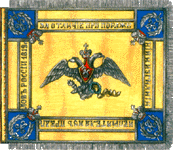Colin Knox wrote:
Rich your post is good
I want to comment that what Bill has done in these later titles is much more realistic in my view and an improvement to the game.
In essence cavalry is under powered in Waterloo for the following reasons
The multiplier
The low vp cost of infantry
The high vp cost of cavalry
The stacking
In later titles cavalry has become much more realistically Napoleonic
This is achieved as Rich observes with the higher stacking, better multiplier and more balanced vp cost (3 points per 25 inf 5 per 25 cav).
The result of this is that you cannot simply advance infantry in the open anymore and get him your opponent to commit his cav so you can then get some good vp.
If you get caught in the open the cavalry will cut you up and the VP cost will be very bad. This in my view is realistic. There are many accounts of single sqd's of heavies putting pay btns of infantry. During the period it was pretty much essential to form square and this is much more the case in the games now.
I think the poor performance of cav in the early HPS games may well be a reflection of an ACW mentality. The Napoleonic period is a true combined arms period and cavalry shock was a key component. This had changed by ACW with cavarly filling very much a dragoon/light cavalry role.
Anyhow I am glad the new titles have this feature it's a big improvement but I would agree with Rich its important you are aware of it as it greatly changes you infantry tactics.

Colin,
It's hard to agree with you. Well, of course change in pdt parameters did make cavalry more dangerous. But it was achieved by absolutely unhistorical means.
The hex frontage is set to be 100 m. At the very most, with all those officers and nco set in front and in the rear of squadrons and with all the intervals brought to zero, a "mounted wall mode", you can get into this frontage 150 men. Plus the same number of men in the second rank. Totally 300. It was Gustavus Adolphus who empirically proved that cavalry should not form more than three ranks deep. The others do not take part in melee and should be better used to extend the front or to form the reserve. Since the times of Frederick the Great this number was decreased to two lines. Actually only the first rank takes part in melee. But if there is a gap in the first line it significantly decreases efficiency of attack. Hence the second line is needed ONLY to fill in the gaps in the first rank. Stacking limitations since Austerlitz allow to stack up to 900 in a hex. It allows to use them all in melee. And attacking stack effective strength increases with increase of the numbers between 300 and 900 men. This is absolutely unnatural.
Unlike that we in H&R project preset that:
1. One can't stack more than 300 cavalrymen in a hex.
2. One can't stack more than 2 squadrons in a hex.
3. Heavies squadron is about 140-150 man strong, Dragoons - 120-130, lights 105-115, militia - 100, cossacks 85-10.
4. Fresh single heavy squadron may defeat a fresh single infantry batallion (set to be 400-450 man strong) both in line/column.
Then the parameters in pdt and oob files were fitted so that all the aforementioned requirements were satisfied. In particular charge factor became as big as 9! Actually that does not matter. What does matter is that fresh single heavy squadron may defeat a fresh single infantry batallion with a probability about 20-30%. That is absolutely historical. Take notice that all the fact when such a victory did take place was marked as a distinguished conduct of the cavalry. And while doing so loses of cavalry and infantry INCLUDING those from inf defensive fire ON THE AVERAGE are about equal in terms of VPs. We did make computational experiments with numerous and numerous melees. If your cavalry is not fresh (it charged at least once) such an outcome becomes very unprobable. But if you use two squadrons of any sort most probably you'd chop any unsquared batallion into small pieces.
This is historical. Improving realism in one place decreasing it in three other I can't call historical.
So... Join our cause! Only H&R! Only Hardcore!

_________________


Leib-Guard Cuirassiers Regiment's
General-Fieldmareshal Count Anton Kosyanenko
Commanding Astrakhan grenadiers regiment
2nd Grenadiers Division, Russian Contingent





